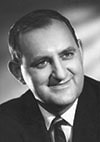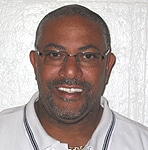Born in 1930, Art Hanford began his railroad career as a darkroom technician for the Chesapeake & Ohio (C&O) Railway in 1953. While with the C&O, he earned a reputation as a quality photographer and writer. He was a trusted employee of Cyrus Eaton, the C&O Board Chairman at the time, and accompanied him on many trips to The Greenbrier Resort, then owned by the railroad, in White Sulfur Springs, WV.
In 1958 he went to work for the Brotherhood of Locomotive Engineers (BLE) as photographer-reporter and continued to earn credit for his work on the union’s publications. During this time, Art spent many years working with the BLE Grand Chief, Guy Brown. At that time, the BLE had over 60,000 members.

Early in 1967, Art moved to Chicago as managing editor of Railway Purchasing & Stores, one of several magazines, including Railway Age, published by Simmons Boardman.
Later that same year, Art accepted a position back in Ohio from the Brotherhood of Railroad Trainmen as Assistant Editor of Trainman News, the official BRT member publication. Charles Luna was president at the time.
In 1969, the BRT merged with three other rail unions to form the United Transportation Union, where Luna was named the new union’s president. In 1971, Al Chesser became Luna’s successor as president of the UTU until 1979, who was then followed by Fred Hardin (until 1991).
Art Hanford retired in 1990, with his last held position being the UTU’s Director of Internal Communications. At that time, the union had approximately 90,000 members.
Among the most memorable trips for Art were those traveling with engineers on steam locomotives, which were fast disappearing. He was also assigned to take pictures of Queen Elizabeth II in 1959 on a Royal train trip through Canada. Other celebrities he photographed in his career were Ben Hogan while playing in a golf tournament at the Greenbrier.
Art wrote several books after he retired, including a yet-to-be-published autobiography titled “Writing on the Railroad.” Art’s son, Guy Hanford, indicated that the family plans to finish publishing the book in honor of their father.
Art Hanford died peacefully surrounded by his family on Friday, March 15, 2019. He is survived by his wife Janice of 66 years.
